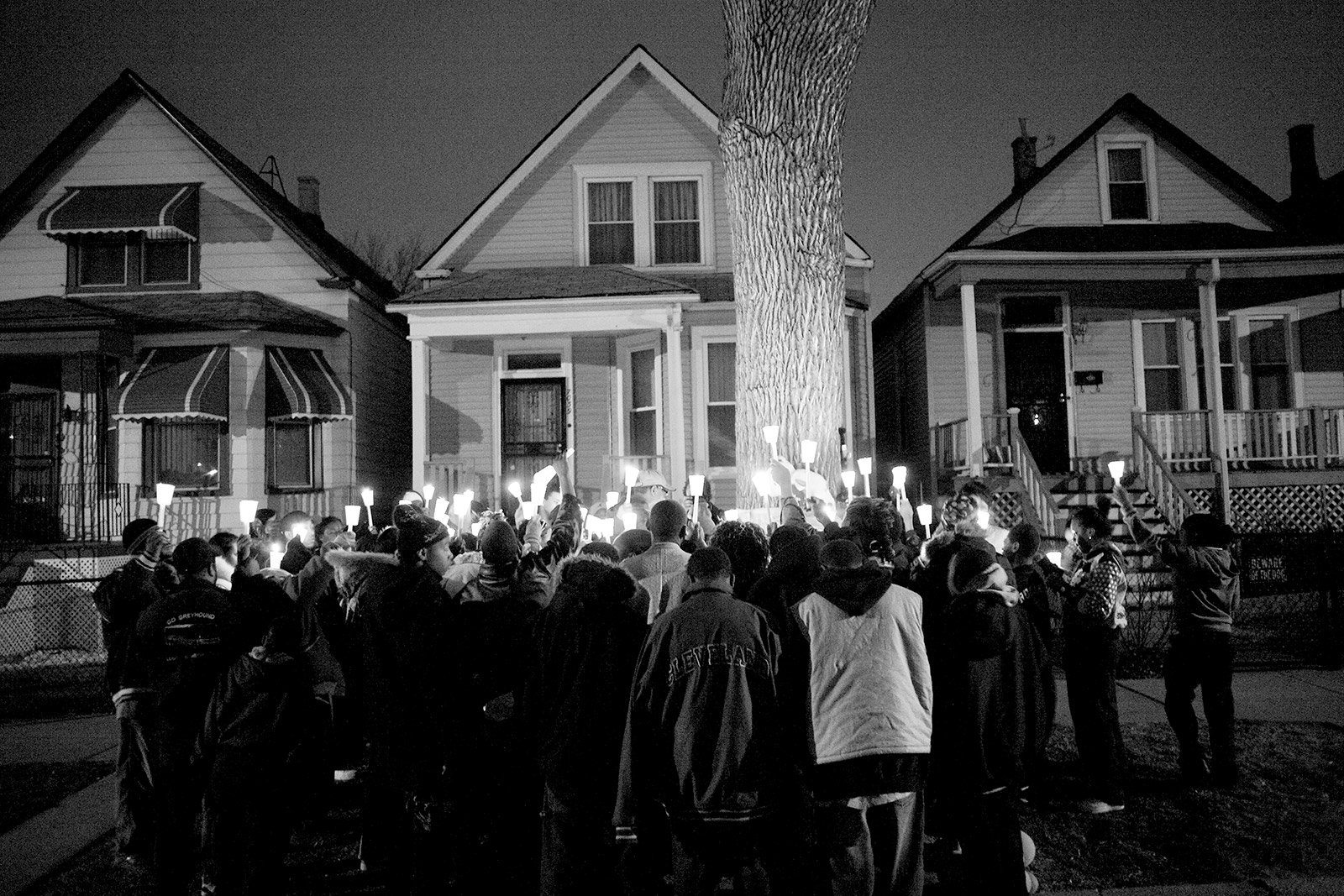
Too Young to die
Photography by Carlos Ortiz, 2011
“Too Young to Die” Lesson Plan
Resources for this lesson:
The 10 images in this section explore the aftermath of violence in Chicago and Philadelphia as seen through the eyes of Carlos Javier Ortiz. To frame these photographs in terms of the Aftermath Project, Sara Terry introduces them by asking viewers to consider the following questions: “How do you memorialize violence in an urban setting when you are not making a statue to the person who went off to war? How do you remember the people who have been killed, the people who suffer? How do we identify the stories of those who are left behind? How is the violence perpetuated? How does imagery continue the cycle of violence?”
In viewing these images, it is also critical to recognize that the context of the violence is complicated; a cycle of violence should not be dismissed as endemic to a particular group or urban environment. It may be helpful to keep the following prompts in mind as you view and discuss the images:
What story—or whose story—do these photographs tell? What would you like to ask the people pictured, and what might they say? What do you think the photographer wants us to do with these images? How might he want us to react?
How do these images confront or counter media representations and stereotypes of urban youth?
How can these images impact the way we talk about violence in our cities and among urban youth today?
What does the title of this project, “Too Young to Die,” suggest to you in relation to the content of these images?
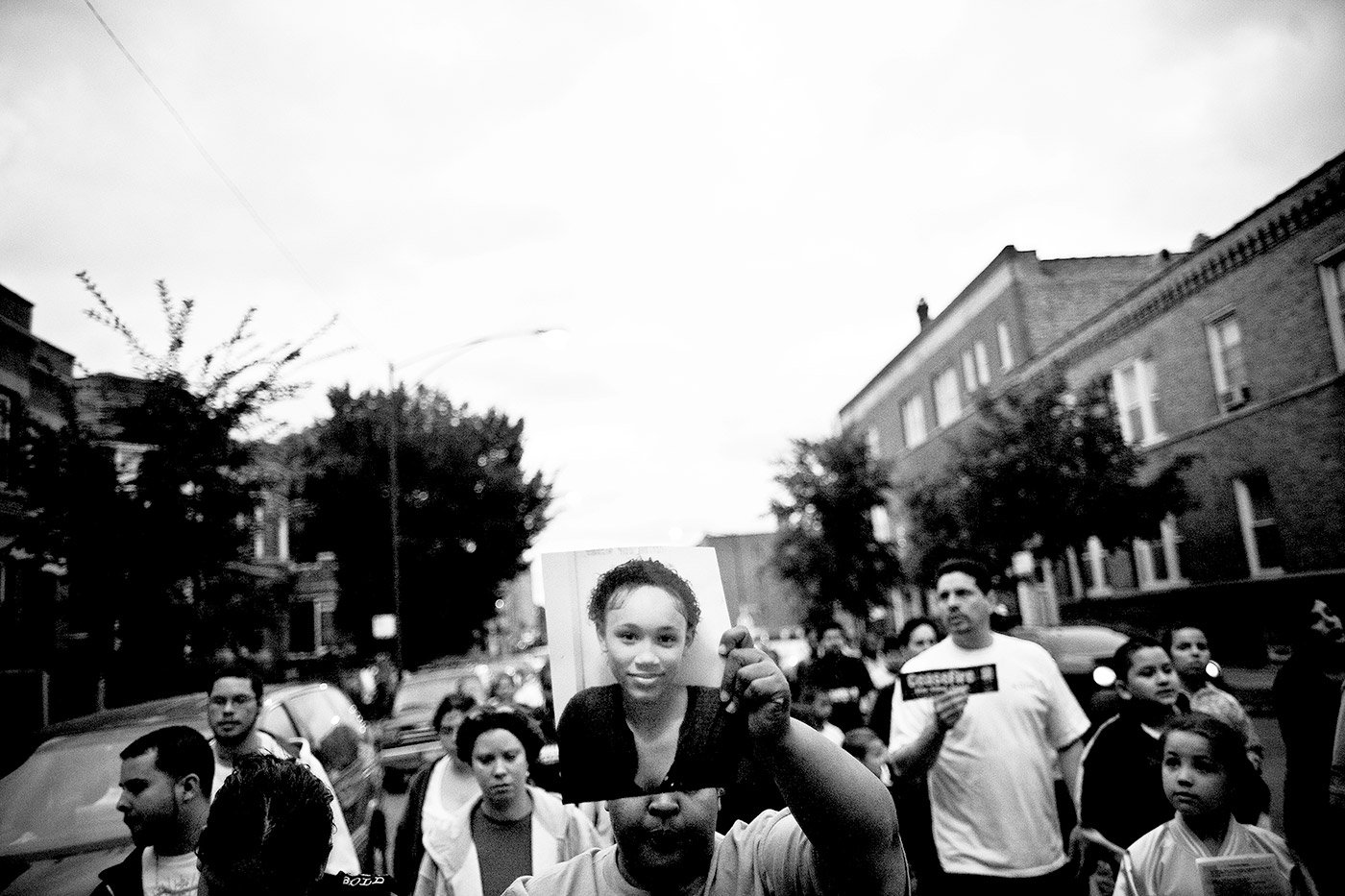
Eternity Gaddy, a 13-year-old bystander struck by a stray bullet during a suspected gang shooting, was killed on September 3, 2008. The young resident of Allentown, Pa., and her mother had been spending the summer in Humboldt Park, the sometimes-violent a neighborhood from which the family had moved years ago.
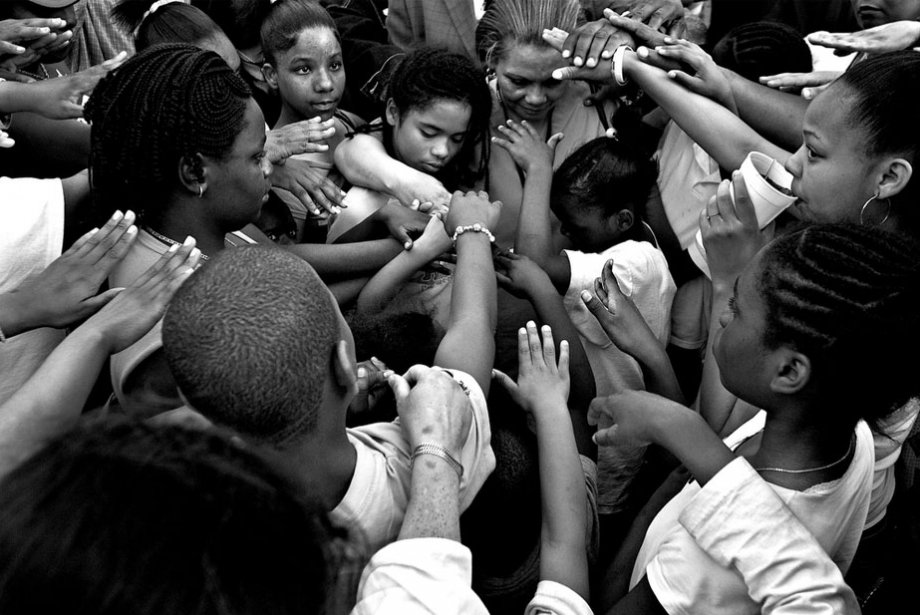
Families pray together on the West Side of Chicago to remember a young girl who was raped and killed. Parents who have lost children to violence often come together here to support other families who have experienced the same tragedy.
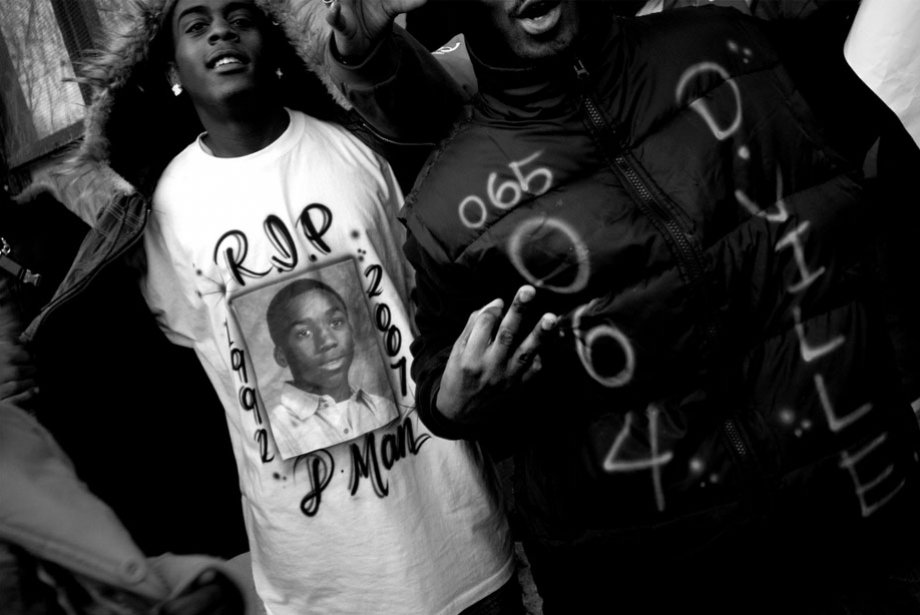
Darius Mitchell, a 14-year-old boy from Chicago, was shot and killed at a house party after a fight in 2007. Darius Mitchell’s friends show off their T-shirts, which refer to him by his nickname, D’Man.
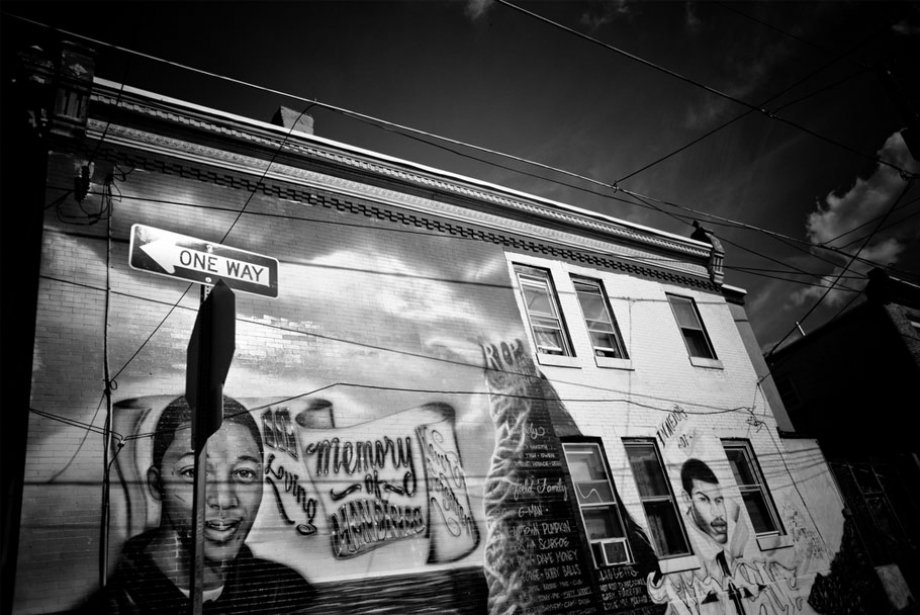
Murals memorializing fallen youth in North Philadelphia are reminiscent of the murals for activists in Palestine’s Gaza Strip. In Philadelphia, more than 80% of murders are shooting deaths, versus 70% nationally.
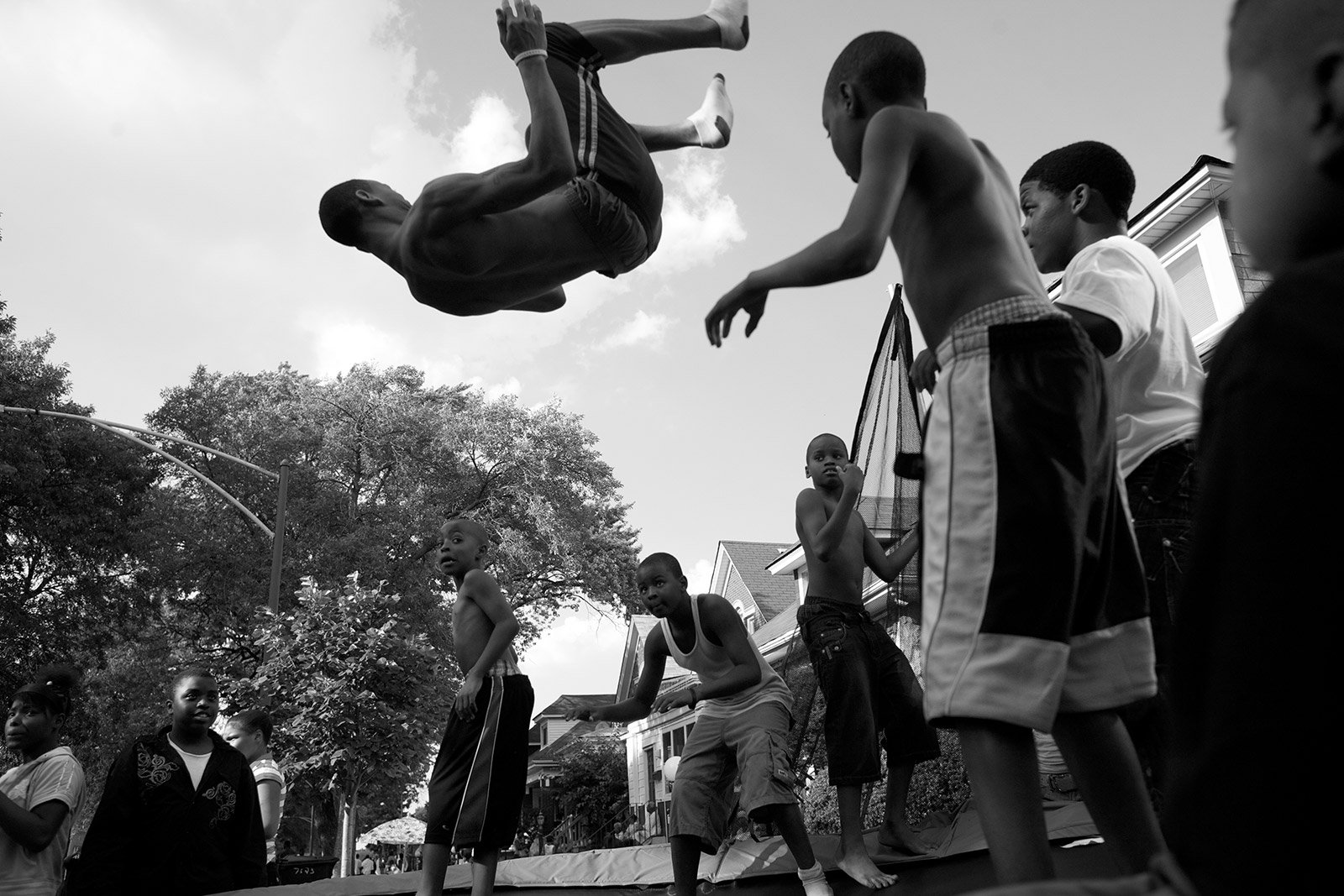
Kids jump off of a trampoline during a block party in Chicago, Illinois, in 2008.
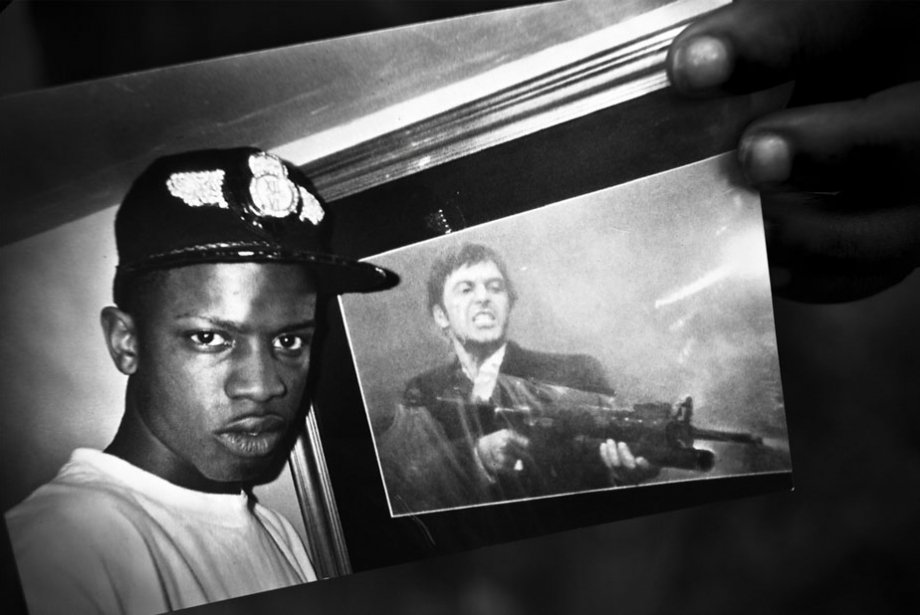
A snapshot shows a 21-year-old man who was killed at a birthday party on Chicago’s West Side. In the photo, the young man stands next to a painting from the movie Scarface.

Albert Vaughn was the neighborhood guardian, an older teenager who would play ball with the younger kids and try to keep them safe from trouble. “If he was guilty of anything, he was guilty of always protecting these kids,” said Trualanda Fields, a neighborhood mother who was among 50 people who gathered to pay tribute to the 18-year-old they called Lil’ Albert.
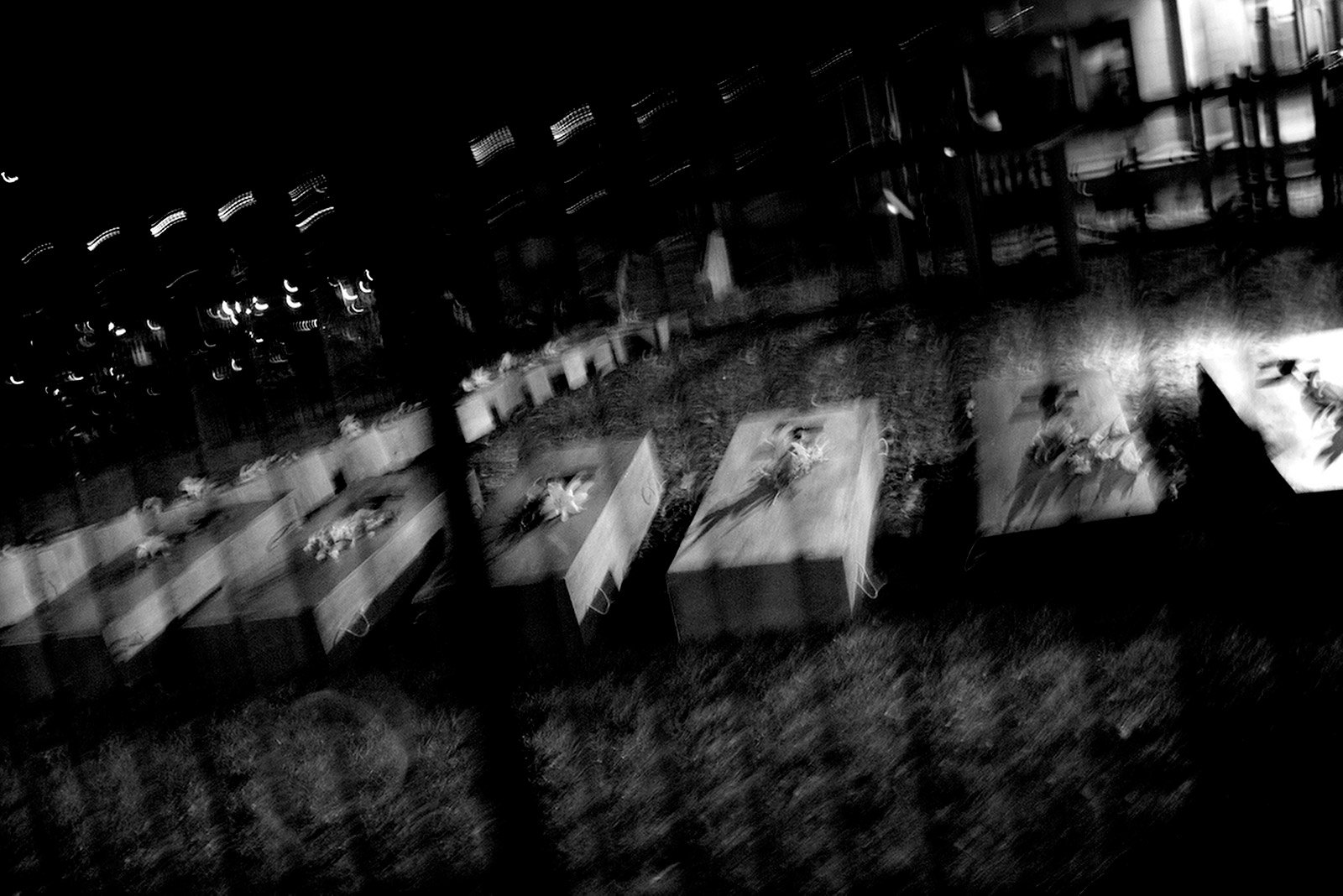
Thirty-two pine replicas of caskets, each topped with a black cross and flowers, sit in the playground of Sabina Church in Chicago’s Englewood neighborhood. The caskets, made by teenagers, represent the 32 Chicago Public Schools students who died from violence in 2008.

A woman cleans the blood of Jalil Speaks. The 16 year-old teenager was killed in front of Strawberry Mansion High School in North Philadelphia in 2004. Jalil Speaks was shot outside the school shortly after classes let out.
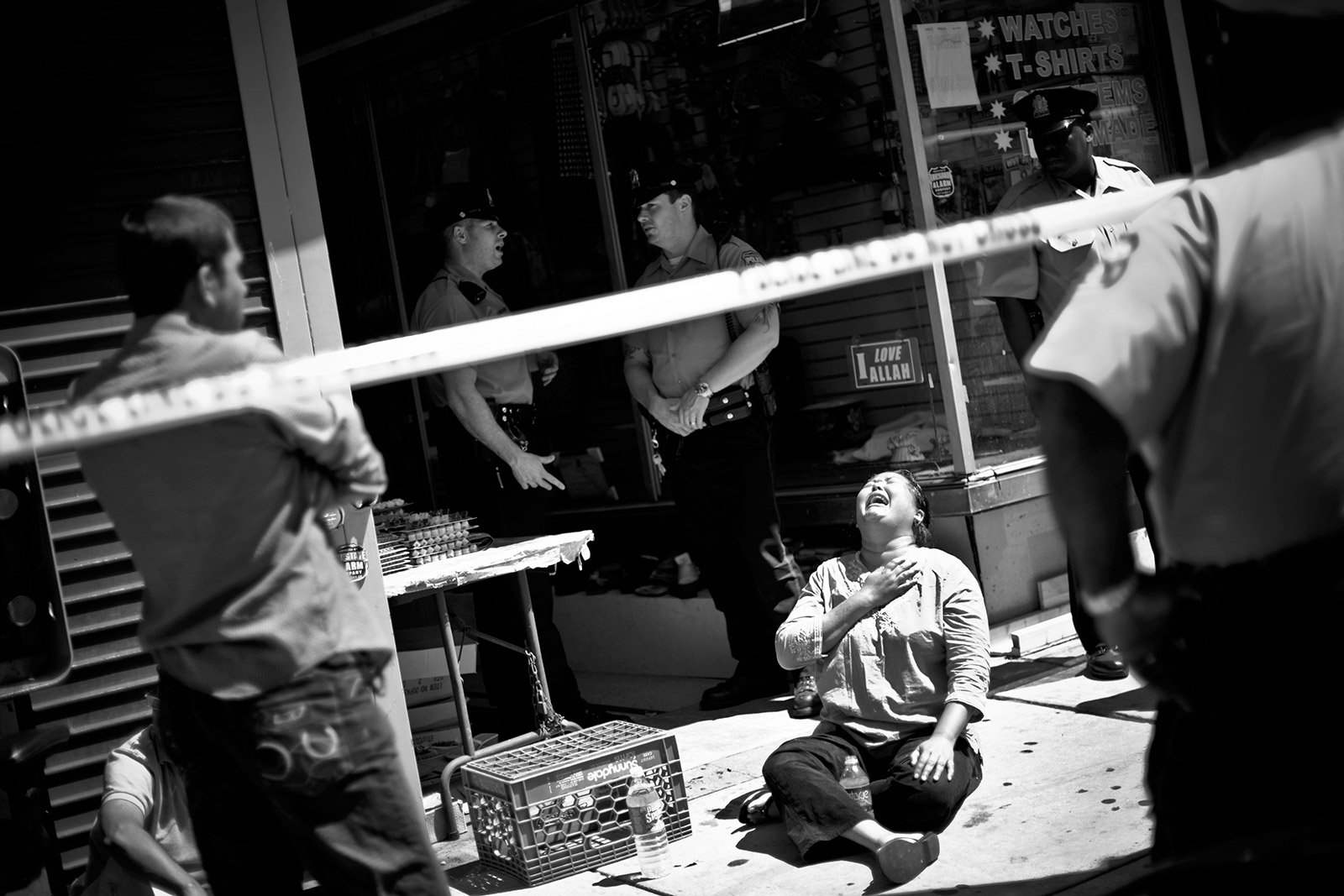
Fakhur Uddin's mother cries in front of the store where he was found dead on August 20, 2008. Uddin was bound with duct tape and shot in the head in the back room of the East Germantown gift store he was minding for his father. The murder occurred almost exactly seven years to the day Mr. Uddin came to America from Bangladesh.